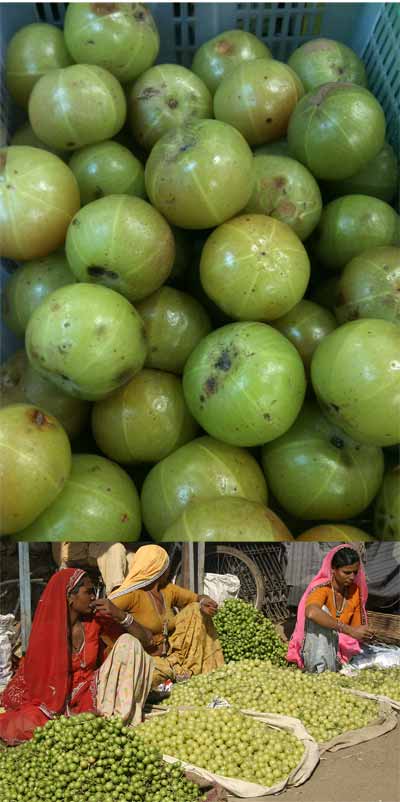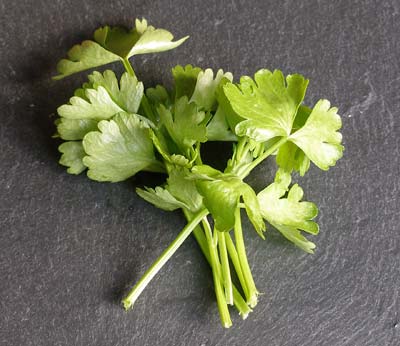Mango powder. A very sour flavouring agent with a slightly fruit flavour made from dried under-ripe mangoes, rather similar to tamarind in cooking.

Indian gooseberry. A sour fruit used in chutneys and preserves, but more frequently used for medicinal purposes than culinary.

Chinese celery, the seeds of which are used as well as the leaves. Asian celery is smaller and darker than European celery. It is also stronger, so it is not used raw but is used for flavouring stocks and soups.
Lovage seeds from a plant of the caraway family, used mainly in Indian cooking. The greenish-brown seeds are a little larger than celery seeds and have a strong aroma of rather coarse thyme. Oregano can be substituted.
Taro leaves. Colocasia leaves. Taro is a name used to cover many root crops grown in tropical regions, most commonly Colocassia esculenta. The leaves come from plants cultivated in warm climates both for their leaves and tuberous, potato-like roots, or corms. The roots, the flesh of which may vary from white to pink, have a delicate flavour and can be peeled and boiled, roasted, mashed, fried or included in a stew and look like a pointed swede, often with a ridged surface and protruding roots, with hairy beige or brown skin. They may weigh as much as 2 kg (4¼ lb). The leaves are large and floppy, fan-like and used as a vegetable or in soups. Some varieties of taro grow extra corms which bud on the main corms, or dasheens. These "buds" are known as eddos, particularly in the West Indies. Taro is a good source of high-grade protein. Whole taros with the skin intact are preferable to those that come peeled.